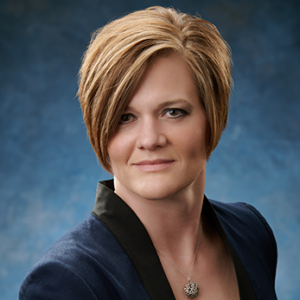Colorado trial lawyers and business leaders have filed a quartet of ballot initiatives over the past week that are likely to lead to a big-money showdown at the November election and could drastically affect how lawsuits proceed in this state.
Proponents coordinated by the Colorado Trial Lawyers Association made the first move on Thursday, filing two ballot proposals that would lead to expanded awards in lawsuits, particularly those involving medical malpractice. One would eliminate noneconomic damage caps in catastrophic-injury and wrongful-death cases, and the other would expand the records that can be accessed in medical-malpractice suits, including communications between health-care providers about patients.
Then on Wednesday, Coloradans Protecting Patient Access — a coalition of hospitals, physician groups, liability insurance companies and business organizations — filed two countermeasures that would limit the amount of money that trial lawyers could make from such cases. The first would cap attorney’s fees for personal-injury and wrongful-death suits at 25% of the money awarded to clients, and the second would require attorneys to disclose all litigation expenses that clients are responsible for paying and cap those expenses at no more than 10% above the costs estimated for them at the beginning of the cases by attorneys.
An overview of damage caps
Noneconomic damage caps long have been a hot-button issue at the Capitol. Trial attorneys argue that existing caps limit justice that victims can receive, while business leaders warn that excessive verdicts could cause employers or insurers to leave Colorado.
A 2019 law boosted caps on noneconomic damages in personal-injury and wrongful-death suits by 16.8% at the time and adjusts the caps for inflation every two years. That has left current caps at $642,180 for personal-injury cases and $589,350 in wrongful-death claims.
State law places a soft cap on economic damages at $1 million, but it allows judges and juries to exceed that amount if evidence is presented that they should be greater.

Beverly Razon is senior vice president of public affairs for COPIC Insurance.
Noneconomic damages in medical malpractice cases remain at $300,000, a cap that has been in place since 2003 and that leaves Colorado with the fifth-lowest cap for medical liability in the United States. Beverly Razon — COPIC Insurance senior vice president of public affairs and one of the two designated representatives for Coloradans Protecting Patient Access — said medical leaders are willing to discuss raising the cap but not getting rid of it, as cap elimination would endanger patient access to care if costs must rise to cover extraordinary boosts in insurance rates.
Effects of CTLA proposals
While the ballot measure submitted by CTLA backers on medical-records access would affect medical-malpractice lawsuits specifically, the initiative to remove specified caps would impact a wide swath of businesses, Razon noted. Building owners and managers, fleet managers, product manufacturers and others all are subject to potential personal-injury or wrongful-death suits, and an exodus of insurance providers that could result from cap elimination would make it even harder for them to operate, especially as they already are dealing with major affordability issues.
“In the absence of damages limitations, suddenly everything gets more expensive,” said Kendra Beckwith, a partner with Lewis Roca in Denver and co-chair of the Colorado Chamber Legal Reform Alliance. “It’s not a business issue, it’s a quality of life and living issue here in Colorado.”
CTLA Executive Director Julie Whitacre said, however, that the core issue is accountability — specifically the belief that caps are so low that bad-actor doctors and businesses can just pay out the maximum damages and move on without reforming their practices. The medical-information initiative would force hospitals and doctors to disclose when they knew practices were wrong and whether they did anything, and the cap elimination would allow people maimed for life to get the compensation and help they deserve.
“Right now, our caps are so low, especially on wrongful death and medical malpractice, it’s difficult for patients to seek justice,” Whitacre said in an interview. “This is how our founders decided that we could hold businesses and corporations accountable.”

Julie Whitacre is executive director of the Colorado Trial Lawyers Association.
The costs of removing caps in lawsuits
A 2022 U.S. Chamber of Commerce Institute for Legal Reform study found that “nuclear verdicts” — jury awards of $10 million or more in lawsuits, consisting mostly of noneconomic damage awards — are on the rise, with the median verdict in these cases up 27.5% from 2010-19. These awards, including 101 that exceeded $100 million, are far more common in state courts than in federal courts, and they threaten the viability of businesses while boosting the costs of goods ranging from food to medical care that companies offer, the study found.
Looking just at the healthcare field, Razon estimated that raising noneconomic damage caps even to $500,000 would increase physician insurance premiums between 17% and 38% — costs that get passed onto patients. Medical liability costs are a key factor doctors eye when choosing where to practice, and a big increase could hurt Colorado’s attraction and retention of physicians, which would diminish its healthcare system and hurt the state’s ability to attract businesses, she said.
“This is a major threat for all of our businesses,” Razon said.
Proponents of the CTLA initiatives point to specific cases that, they argue, show the need for added protection for patients and residents that the threat of increased damages can bring. They pointed to a girl rear-ended in an auto accident who will spend the rest of her life in a wheelchair but received just $642,180 in noneconomic damages and to the family of a boy who died after negligent treatment by a doctor who was known to be a drug abuser but whose disciplinary records could not be accessed by patients under state law.
Exemptions on lawsuits’ caps
The proposal to eliminate caps exempts three types of claims — those made against the government, the ski industry and servers of alcoholic beverages. Whitacre said that proponents exempted those areas because there was not significant concern around alcohol servers, because they’re “not looking to bankrupt schools or local governments” and because state law offers so much immunity to ski areas that officials must work on fixing that issue before they can discuss caps.
“This has come from years of feedback that we’ve gotten from our members,” Whitacre said of the ballot effort. “These are things we found we couldn’t change at the legislative level but that need to be addressed.”
But both sides will need to play both offense and defense after the filing of two ballot initiatives by Coloradans Protecting Patient Access. Both seek to bring balance to the legal playing field — a concept that resonates with Colorado voters, Razon argued.
Details of countermeasures
The measure capping attorney contingency fees will change existing practice, where some attorneys can require that they receive 50% or more of any jury award or settlement while billing clients for fees for depositions of witnesses or other court filings, Razon said. The goal of the countermeasures is to ensure that patients, rather than attorneys, get the largest portion of damages, she said.

Loren Furman is president and CEO of the Colorado Chamber of Commerce.
Those countermeasures come after Colorado recently dropped from 9th to 21st in a legal climate ranking put out by the U.S. Chamber of Commerce. That deterioration in climate is making it more difficult for companies to do business here and needs to be reversed through efforts like the attorney-fee limits to boost the state’s economic competitiveness, said Loren Furman, president/CEO of the Colorado Chamber of Commerce and the other designated representative for Coloradans Protecting Patient Access.
“We believe these initiatives will help us stay competitive, provide long-overdue transparency and reign in exorbitant contingency fees that encourage frivolous, costly lawsuits,” Furman said.
Whitacre acknowledged that CTLA’s efforts sparked the possibility for countermeasures and an expensive ballot fight. But she said she still believes that they need to be considered by voters — and if that happens thoroughly, she is confident of their success.
